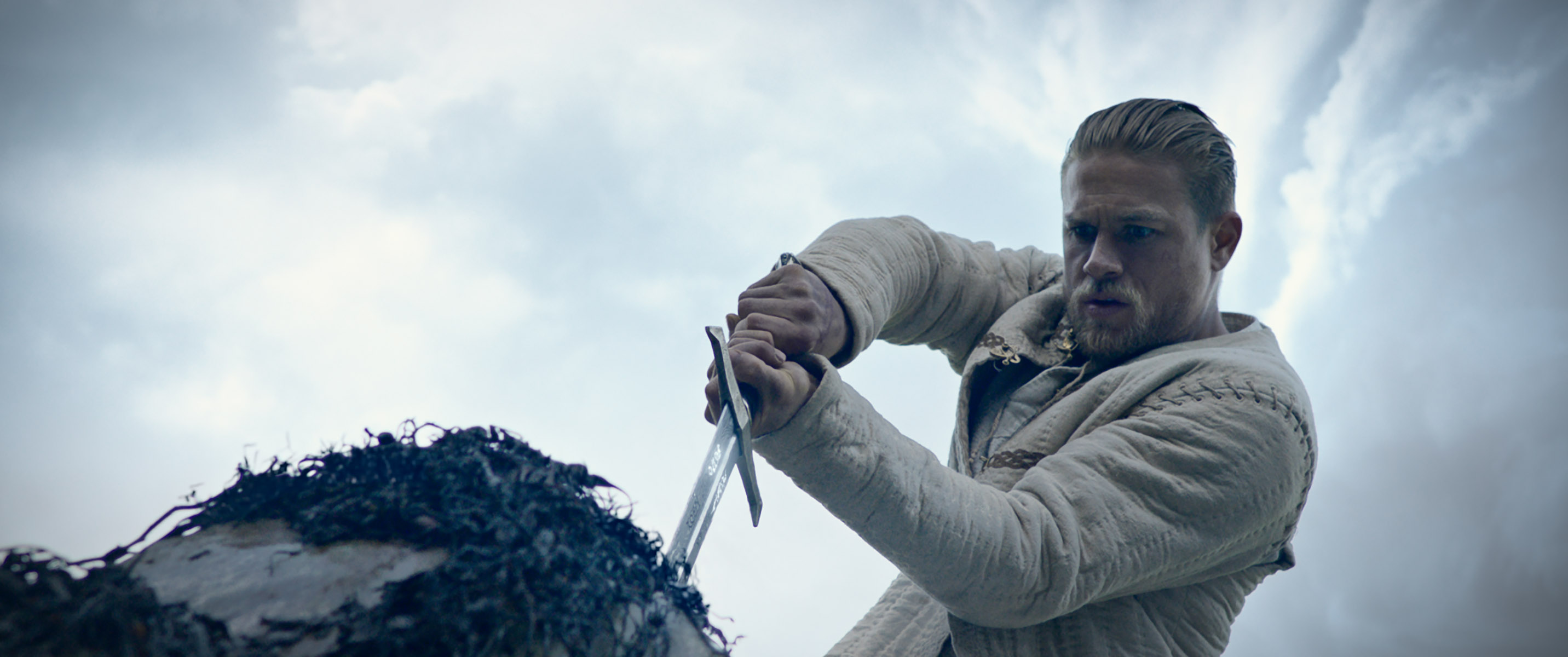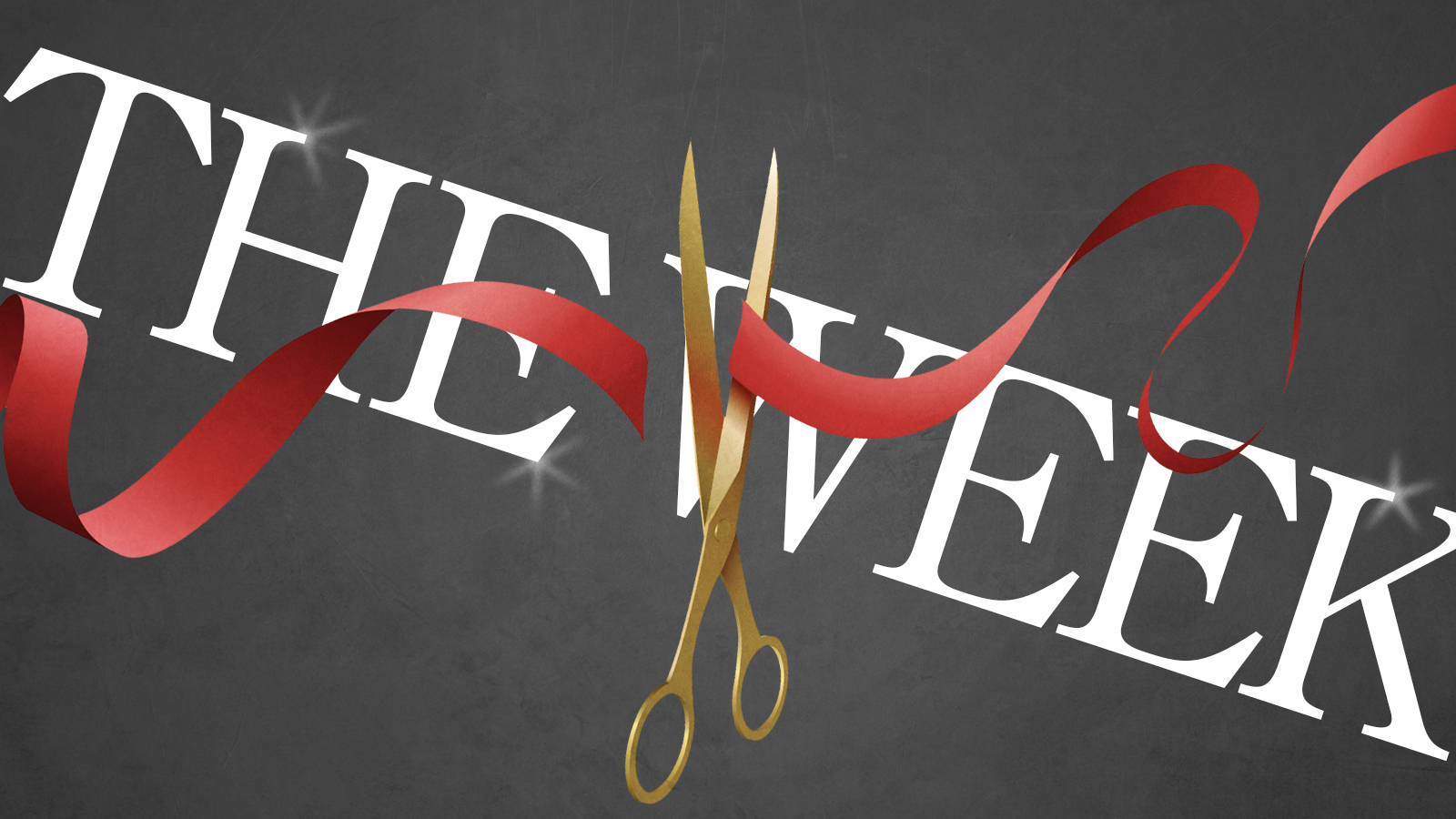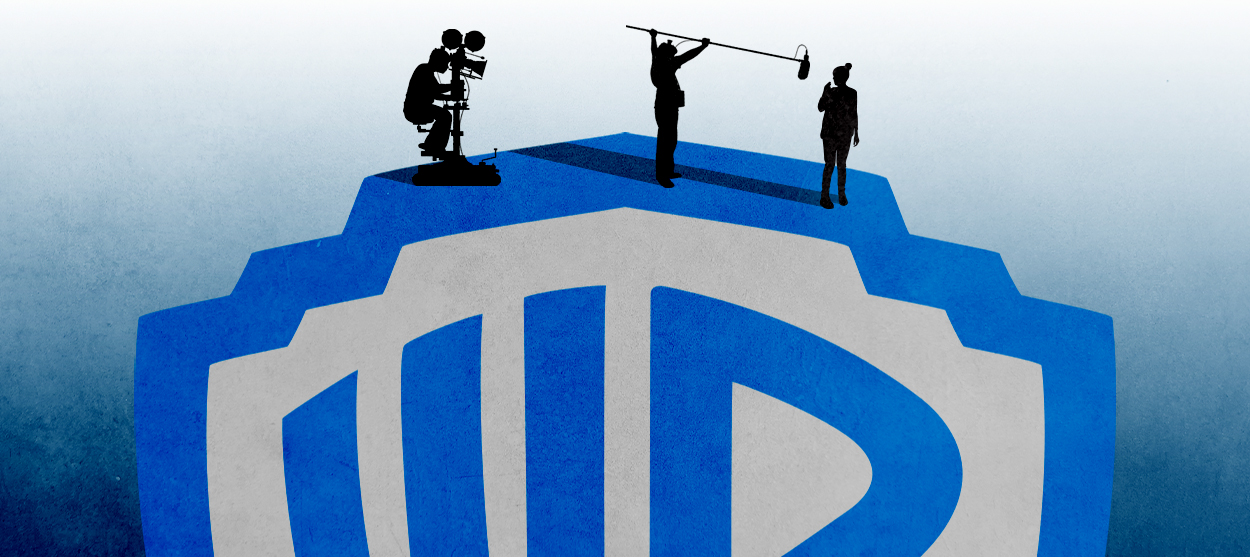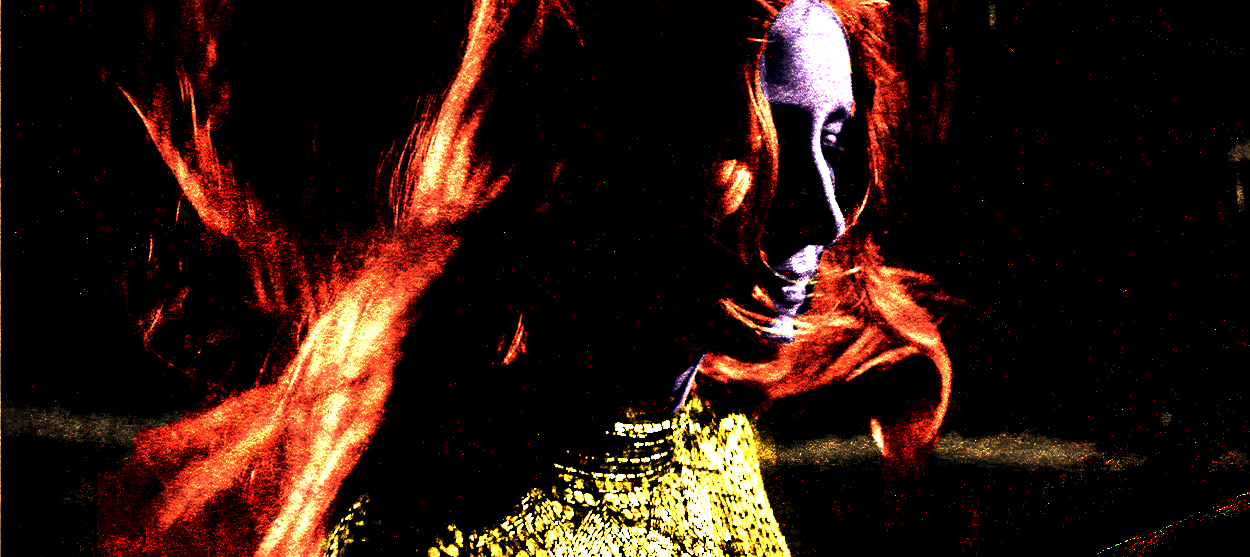10 King Arthur retellings that are even weirder than King Arthur: Legend of the Sword
Steampunk, shmeampunk. How about King Arthur in space?


This weekend's big movie release is King Arthur: Legend of the Sword, the first of what Warner Bros. and director Guy Ritchie are hoping will be a six-film series, turning the myriad old Arthurian legends into an epic blockbuster franchise to rival The Lord of the Rings, Star Wars, and the Marvel Cinematic Universe. Based on the poor-to-middling early reviews, Ritchie and Co. may have to scrap those plans. But whether or not they ever do get to make another King Arthur picture, this initial speed-punk take — which reimagines the hero as a street thug who gets whisked into a frenzied adventure — will still forever be a part of the growing body of novels, cartoons, songs, and motion pictures that have offered their own unique reinterpretations of this particular piece of folklore.
King Arthur: Legend of the Sword is far from the oddest item in that pile. Something about the story of Arthur, Merlin, Guinevere, Lancelot, and the Knights of the Round Table has proven irresistible to artists over centuries. The list below covers relatively modern pop culture Arthuria — some well-known, some more obscure — and even this is just a small sample of what's become a massive sub-genre.
1. Mark Twain, A Connecticut Yankee in King Arthur's Court (1889)
The Week
Escape your echo chamber. Get the facts behind the news, plus analysis from multiple perspectives.

Sign up for The Week's Free Newsletters
From our morning news briefing to a weekly Good News Newsletter, get the best of The Week delivered directly to your inbox.
From our morning news briefing to a weekly Good News Newsletter, get the best of The Week delivered directly to your inbox.
The 19th century experienced a revival of interest in stories about King Arthur, as part of a larger cultural shift toward classicism, romanticism, and renewed commitments to chivalric virtue. Twain satirized that trend with this puckish fantasy novel, which sees an ordinary New Englander named Hank Morgan transported to medieval times, where his familiarity with 1880s technology, medicine, and engineering leads to him being treated as a sorcerer. Twain takes the air out of both Arthurian pretension and modern Yankee arrogance, in a book that so cleverly details its culture-clash that it has inspired "alternate history" and "offbeat time travel" imitators galore, as well as enough direct and indirect adaptations to fill the rest of this list. (In fact, the goofy Twain-inspired 1979 Walt Disney live action comedy Unidentified Flying Oddball may be a weirder King Arthur story than anything below.)
2. Alan Jay Lerner & Frederick Lowe's Camelot (1960) and Walt Disney's The Sword in the Stone (1963)
Most of the modern spins on Arthur and his knights take their cues from T.H. White's popular mid-20th century series of novels, collected under the name The Once & Future King. White's full saga has never been fully transferred over to film or television, but some pieces have, often in unusual ways. The Broadway musical Camelot tells the latter half of the story, mostly in song, emphasizing the emotional turmoil of the king and his court as Arthur discovers that his wife Guinevere is in love with his best soldier, Lancelot.
Walt Disney Productions, meanwhile, turned White's first book in the cycle into the animated The Sword in the Stone, focusing on the whimsical details of Merlin training young Arthur by turning him into various animals. Neither of these projects captures the novelist's Twain-like use of the Arthurian era to comment on the state of the world post-WWII, but they do show the range of White's work, which can be converted into a melodramatic romance or a kooky kidpic.
A free daily email with the biggest news stories of the day – and the best features from TheWeek.com
3. Rick Wakeman, The Myths and Legends of King Arthur and the Knights of the Round Table (1975)
Progressive rock musicians like Yes' synthesizer wizard Rick Wakeman have a natural affinity for sprawling fantasy, since the visions and ambition of science-fiction and pulp-adventure writers matches their belief that entertainment should be grand. Wakeman's third solo album is full of orchestral pomp and jammy noodling, but even more overwhelming than the record itself were its 1975 concert performances, which saw the keyboardist donning chainmail and employing props to set the scene. He infamously ended the tour with three shows at Wembley Arena that included ice dancers, taking Arthurian kitsch to new heights.

4. George Romero's Knightriders (1981)
Riding high from the international success of his Dawn of the Dead, grindhouse auteur George Romero poured his heart (and his wallet) into an offbeat passion-project: a socially relevant drama about a troupe of motorcycle-riding traveling performers, fighting to preserve a code of chivalry in a materialistic modern world. Borrowing liberally from the mythologies of King Arthur and Robin Hood, Romero delivered one of his best movies, illustrating how, from generation to generation, mundane betrayals and raging human emotions ultimately tarnish every golden age.

5. Mike W. Barr & Brian Bolland's Camelot 3000 (1982-85)
Comic book versions of King Arthur were fairly common and generally tame prior to the early '80s, before DC's 12-issue "for mature readers only" maxi-series Camelot 3000 offered something more original and sophisticated. Inspired in part by writer Mike W. Barr's academic studies of Arthuria, the book takes the "future" part of The Once & Future King seriously, with a plot set a thousand years from now, on an Earth threatened by alien invasion. King Arthur is resurrected to protect his home, but his plan is endangered when his reincarnated knights fall back into their worst old patterns. Beautifully rendered by artist Brian Bolland, Camelot 3000 is one of the forgotten gems of mainstream comics' first big push for adult readers — and is still ripe for some kind of big- or small-screen adaptation.
6. Marion Zimmer Bradley's The Mists of Avalon (1983)
It's almost impossible to tally up all the novels that have dropped the Arthurian characters into different eras and/or milieux, or that have retold the legends from the perspective of the supporting players. But it's not that hard to name the best post-T.H. White attempt at a full literary retelling of the King Arthur story. Marion Zimmer Bradley's The Mists of Avalon is a pivotal work of fantasy, revisionist, and feminist literature, using the tragic arc of the villainess Morgan le Fay as a way of presenting an alternate perspective on everything from paganism to the patriarchy. The book was later adapted into a 2001 TV miniseries, though its more valuable legacy may be the "Avalon Series" that Bradley and writer Diana L. Paxson embarked on after the original became a bestseller, building an entire female-centered counter to folkloric history.
7. Doug Henning's Merlin (1983)
Magician Doug Henning's heyday as a TV and Broadway personality was nearing its end when he starred in the expensive musical Merlin, about the wizard's pre-Arthur young adulthood. With music by Elmer Bernstein, a book by Columbo creators Richard Levinson and William Link, and direction by Henning's old Canadian pal Ivan Reitman (fresh from making the hit movies Meatballs and Stripes), the show was expected to be a bigger hit than it turned out to be. But it did get nominated for a handful of Tonys, and it did put the magical elements more at the center of Arthurian tales — if only to give Henning a chance to dazzle audiences with his skills as an illusionist.

8. Jean Chalopin's King Arthur and the Knights of Justice (1992-93)
Despite the best efforts of multiple media companies — including animation studio Golden Films, the Enix video game corporation, Mattel toys, and Marvel Comics — the bizarre concept for this syndicated cartoon series never really caught on with early '90s kids who watched TV, played games, bought action figures, or read. The heroes were a modern professional football team, the New York Knights, led by quarterback Arthur King, who are dragged into the past by Merlin to fill in for the captured Round Table knights. The show follows the football players' quest to complete a series of tasks intended to free the original knights, which would then allow the team to get back to the gridiron. But because Knights of Justice was canceled after only two seasons, the checklist was never completed, meaning that presumably Arthur King and his men are still slugging away in the dark ages.
9. Elizabeth Stewart's Guinevere Jones (2002)
One of Chris Hemsworth's first roles on Australian TV was in this kid-friendly fantasy series, about a Canadian teenager who has a tough time after moving to Melbourne until she discovers that she's actually the reincarnation of Guinevere. Hemsworth played King Arthur in a handful of flashback sequences, while Tamara Hope played "Gwen," the modern kid who learns magic under the tutelage of Merlin. Created by writer Elizabeth Stewart (who previously worked on the similar Canadian show The Adventures of Shirley Holmes), Guinevere Jones was part Buffy the Vampire Slayer, part Camelot.
10. Monty Python and the Holy Grail (1975) and Monty Python's Spamalot (2004)
While most riffs on the Arthurian era retell the story of the king's glory and betrayal, the comic anarchists in Monty Python took their inspiration more from the picaresque one-off adventures of Arthur and his knights that were popular across England and France for centuries. In their 1975 cult movie and its Tony-winning 2004 Broadway musical adaptation, the troupe calls back to the spoofery of Mark Twain, treating courtly codes and noble quests as fodder for merciless mockery. They don't see Arthur's story as any kind of tragedy, because they've thrown the rosy depictions of the olden days aside in favor of a past filled with mud, plague, and pettiness — where the people are no better or worse than they've ever been, no matter how fancy their headgear.
Noel Murray is a freelance writer, living in Arkansas with his wife and two kids. He was one of the co-founders of the late, lamented movie/culture website The Dissolve, and his articles about film, TV, music, and comics currently appear regularly in The A.V. Club, Rolling Stone, Vulture, The Los Angeles Times, and The New York Times.
-
 Political cartoons for January 3
Political cartoons for January 3Cartoons Saturday's political cartoons include citizen journalists, self-reflective AI, and Donald Trump's transparency
-
 Into the Woods: a ‘hypnotic’ production
Into the Woods: a ‘hypnotic’ productionThe Week Recommends Jordan Fein’s revival of the much-loved Stephen Sondheim musical is ‘sharp, propulsive and often very funny’
-
 ‘Let 2026 be a year of reckoning’
‘Let 2026 be a year of reckoning’Instant Opinion Opinion, comment and editorials of the day
-
 Walter Isaacson's 'Elon Musk' can 'scarcely contain its subject'
Walter Isaacson's 'Elon Musk' can 'scarcely contain its subject'The latest biography on the elusive tech mogul is causing a stir among critics
-
 Welcome to the new TheWeek.com!
Welcome to the new TheWeek.com!The Explainer Please allow us to reintroduce ourselves
-
 The Oscars finale was a heartless disaster
The Oscars finale was a heartless disasterThe Explainer A calculated attempt at emotional manipulation goes very wrong
-
 Most awkward awards show ever?
Most awkward awards show ever?The Explainer The best, worst, and most shocking moments from a chaotic Golden Globes
-
 The possible silver lining to the Warner Bros. deal
The possible silver lining to the Warner Bros. dealThe Explainer Could what's terrible for theaters be good for creators?
-
 Jeffrey Wright is the new 'narrator voice'
Jeffrey Wright is the new 'narrator voice'The Explainer Move over, Sam Elliott and Morgan Freeman
-
 This week's literary events are the biggest award shows of 2020
This week's literary events are the biggest award shows of 2020feature So long, Oscar. Hello, Booker.
-
 What She Dies Tomorrow can teach us about our unshakable obsession with mortality
What She Dies Tomorrow can teach us about our unshakable obsession with mortalityThe Explainer This film isn't about the pandemic. But it can help viewers confront their fears about death.
